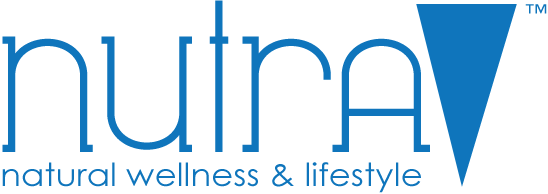What are Peptides and How Do They Improve Performance?
If you follow exercise blogs or talk about nutrition with gym buddies, you most likely have heard about peptides. There is a wide array of them; some, like collagen, are staples of a nutritious diet, while others are useful for biohacking, an attempt to manipulate your mind and body for better performance. Many types of peptides have recently been discovered and otherwise would be unfamiliar unless you were deep into fitness nutrition. Some of these peptides may bring up more questions than answers.
Peptides can have an extensive effect on your physical efficiency. Peptides are great for constructing muscles and melting fat – so much so that some are considered performance-enhancing drugs. They also help with improved recovery from muscle and joint issues.
This short article will cover all you need to know about peptides, from the well-known ones to the lesser-known ones that can be risky.
WHAT IS A PEPTIDE?
Peptides are like mini-proteins, both of which are made of amino acids. In general, anything under 50 amino acids is a peptide, and anything over 50 is a protein.
Supplement producers often reduce the amino acids in proteins to under 50 to create peptides so our bodies can use the acids more effectively. Collagen is an example of this. Collagen proteins are tough to absorb on their own, but collagen peptides are easier.
Your body naturally comes with its own peptides. They often function like hormones, moving information between tissues via the blood. Some of the more experimental versions of peptides, like those used for performance enhancement, resemble the body's natural peptides. They help increase testosterone and human growth hormone for improved muscle and cartilage performance, as well as fat loss.
Below are a couple of peptide options for performance enhancement. They're organized from the more typical and well known, to the more experimental and lesser-known.
COLLAGEN PEPTIDES FOR AGING AND BEAUTY
Collagen is a healthy protein in your skin, hair, nails, bones, and tissue, and your body continues to produce it throughout your life. As you age, your body slows down in producing collagen, causing your skin and joints to age.
The 3 amino acids required to make collagen-- glycine, hydroxyproline, and proline—aren't very plentiful in meat like poultry or beef, this is where a collagen supplement comes in.
Your body can use collagen supplements to increase its quantity in your body, bringing a more youthful look to your skin and keeping your body flexible as you get older. But your body has trouble digesting it. To improve digestion, collagen is hydrolyzed into collagen peptides. For improved results, choose grass-fed collagen peptides from cattle without antibiotics or hormones.
CREATINE PEPTIDES FOR ADDED MUSCLE AND STRENGTH
Creatine has been a bodybuilding staple for years. It is believed to boost strength and muscle growth.
In the process of extreme sprints or lifts, you may notice after 8-10 seconds a drop in energy and increased difficulty in completing your motion. This is your anaerobic threshold - the point where your body muscle taps out on ATP energy.
Taking creatine boosts the volume of ATP your muscles house during rest, giving you more time to complete extreme moves and therefore improve your HIIT workout.
Creatine also helps with protein synthesis for an added 15% more muscle, and it works as a nootropic to boost memory and alleviate muscle fatigue.
Taking creatine requires loading up heavily on it early on and then tapering it down to a standard dose. This loading phase can lead to headaches, stomach discomfort, nausea, dehydration, and other issues. Though these issues are uncomfortable, they aren't dangerous. To make it easier, creatine peptides can reduce loading stage to just a few days.
BPC-157 FOR RAPID RECOVERY FROM INJURIES
Note: BPC-157 is a performance-enhancing drug, which can disqualify you from competitions.
BPCs (Body Protecting Compounds) are still new to the scene and still need to be studied more on humans. Results on mice and on people who have taken it are impressive – particularly in the area of healing soft tissues.
- BPC-157 speeds up healing on Achilles tendon ruptures and torn MCLs in rats. It works so well in reattaching Achilles' tendons that it may be studied further for use in human surgery.
- BPC-157 speeds up healing in leaky guts and reverses IBS damage in rats.
There were no noticeable adverse effects shown in these studies with rats, but they have yet to be done on humans. People who have reported using it say it works tremendously well, but the real results are still pending.
You can either take BPC-157 by mouth or inject it in muscles and joints, but it is advised to have it done professionally. And since it is still new and results are yet to come, you will need to be aware of the risks.
FOLLISTATIN FOR MUSCLE GAIN AND FAT LOSS
Belgian Blue livestock are hyper-muscular bulls due to a hereditary anomaly that reduces myostatin, a substance protecting against muscle mass development. With extraordinarily reduced myostatin degrees, these livestock place on muscular tissue easily.
Follistatin is a peptide that imitates what Belgian Blues normally have. It reduces myostatin, which brings about remarkable muscle mass development.
The body makes follistatin, yet as a supplement, it's brand new. There is just one research study on individuals taking follistatin for eight weeks in combination with resistance training, and there are some animal studies. There's also an intriguing study of a child born with the same hereditary anomaly as the Belgian Blue livestock, with similar muscle results.
It appears that follistatin might significantly help with your gym results, too. The human research study provided individuals with either 10 grams or 30 grams of follistatin by mouth each day, resulting in increased muscle development. If taking follistatin by mouth, 10 grams appears to be an ideal dosage.
Lots of people inject follistatin, with many intaking between 100-300 micrograms in the muscle areas that are being targeted while also reducing surrounding fat.
Follistatin is still in the early phases of study, and plenty of risks could result.
For more wellness tips visit our blog.





